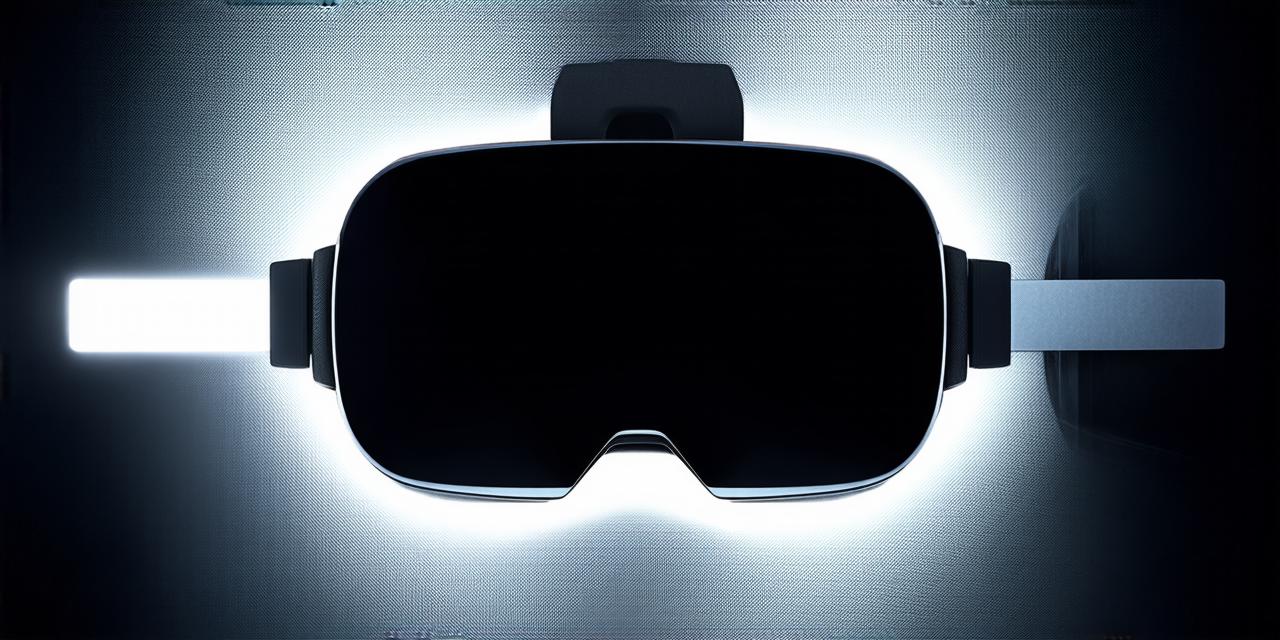1. Wireless Headsets
One of the biggest advancements in VR headset technology is the development of wireless headsets. These devices allow users to move freely without being tethered to a computer or console, providing an even more immersive experience. The Oculus Quest 2 is one such example of a wireless VR headset that has gained popularity due to its affordability and ease of use.
2. High-Resolution Displays
Another major development in VR headset technology is the use of high-resolution displays. These displays provide users with a more realistic visual experience, making it easier to immerse themselves in virtual worlds. For example, the HP Reverb G2 has a resolution of 2160 x 2160 pixels per eye, providing an incredibly sharp and detailed view that can significantly enhance the VR experience.
3. Eye-Tracking Technology
Eye-tracking technology is another innovation in VR headset development that is changing the way we interact with virtual reality. By tracking the movements of a user’s eyes, these devices can provide more natural interactions within virtual worlds. For example, users can look around and interact with objects without having to physically turn their heads, making the experience more intuitive and immersive.
4. Haptic Feedback
Haptic feedback is another advancement in VR technology that is providing users with a more realistic experience. These devices use various sensors to simulate physical sensations, such as vibrations or pressure, allowing users to feel like they are truly inhabiting a virtual world. For example, the Dextrex haptic gloves allow users to feel textures and objects in virtual reality, making the experience even more immersive.
5. Eye-Tracking and Facial Recognition
Some VR headsets now use eye-tracking and facial recognition technology to create a more realistic and interactive experience. By tracking a user’s eyes and facial expressions, these devices can provide more natural interactions within virtual worlds. For example, the HTC Vive Pro Eye uses eye-tracking to provide users with a more intuitive interface, allowing them to interact with objects in virtual reality without having to physically touch them.
6. Augmented Reality (AR) Integration
Augmented reality integration is another innovation in VR headset development that is changing the way we interact with virtual reality. By combining virtual reality and augmented reality, these devices allow users to experience both real and virtual worlds simultaneously. For example, the HoloLens 2 allows users to view holographic projections in their physical environment, providing an even more immersive experience.
7. Hand Tracking Technology
Hand tracking technology is another advancement in VR headset development that is making it easier for users to interact with virtual reality. By using sensors to track the movements of a user’s hands, these devices allow users to interact with objects within virtual worlds without having to use controllers. For example, the Oculus Quest 2 uses hand tracking technology to provide users with a more intuitive and immersive experience.
8. Foveated Rendering
Foveated rendering is another innovation in VR headset development that is providing users with a more realistic visual experience. By rendering high-quality graphics only in the area where a user’s eyes are focused, these devices can reduce the overall processing power required to run virtual reality applications, making them more accessible to a wider range of users.
9. Advanced Motion Capture
Advanced motion capture technology is another innovation in VR headset development that is providing users with more realistic and immersive experiences. By using advanced sensors and tracking systems, these devices can provide users with incredibly accurate and natural movements within virtual worlds. For example, the Vuforia hand and body tracking system allows users to move their hands and bodies naturally within virtual reality environments.
10. Social VR Experiences
Social VR experiences are another innovation in VR headset development that is changing the way we interact with virtual reality.
